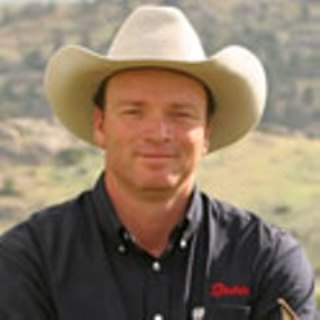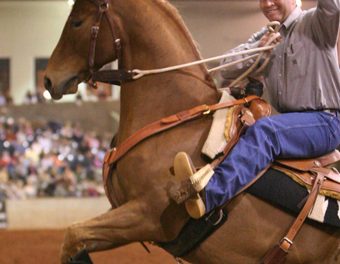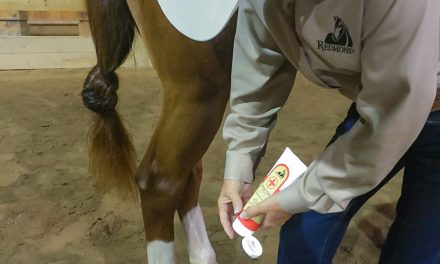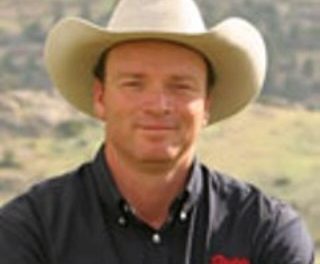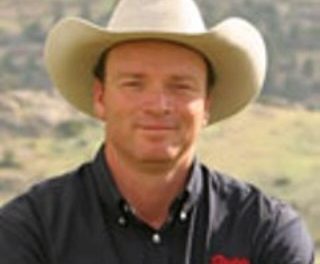 When you are looking at young prospects for your next horse, it’s important that you start with some key things. If you get the right characteristics and the right personality from the start, then you can save yourself lots of wasted training and time on a horse that’s simply not cut out for what you want to do.
When you are looking at young prospects for your next horse, it’s important that you start with some key things. If you get the right characteristics and the right personality from the start, then you can save yourself lots of wasted training and time on a horse that’s simply not cut out for what you want to do.
This month, we’ll focus on what I look for in a ranch horse prospect.
The first thing you should look at when evaluating a prospect is conformation. A horse with bad conformation will be more prone to injury and you don’t want to put years of training into a horse, only to have him go lame in middle age because he’s not built well. Ranch work is demanding and proper conformation will help a horse stand up to the hard work for years.
First, look at the horse’s top line. Draw an imaginary line down from the withers and in front of the hips, and your horse’s bottom line should be longer than the top line. I like a short backed horse. They are stronger and tend to have a long stride that can cover lots of ground. Your horse’s withers should be level with or higher than his hip. In a 2-3 year old horse, I don’t worry if they are a little down hill (withers below the hip) because they are still growing and will probably even out as they get older. I like a low set tail, one that is below the horse’s withers, and a strong, stout hind end. Your horse will need to be able to step under himself and use his hind end to go up and down hills, stop, and turn. I also like a horse with straight legs and good bone structure. To evaluate how straight a horses’ legs are, take a 1/2” nut and tie it to the end of a string. Then drop the nut from the point of the horse’s shoulder so it hangs down the front of his leg. The string should go straight through the middle of his knee, and the middle of his hoof. A horse who is splayed or pigeon toed (legs going to the outside or inside of that straight line) is more likely to have problems with ringbone and other lameness. Do this same test for straightness on the hind end, dropping the string from the point of the horse’s hip. The hocks should not be set too close. A horse with close set hocks is likely to bump himself a lot, causing injury and eventual chronic lameness. I also like a horse with a deep heart girth. This is the distance from the bottom of the front cinch to the top of the withers. Horses with a deep heart girth will have strength to pull when you are roping, and they will have big, deep lungs. I like a horse with a refined head, and one that isn’t too thick through the throatlatch. A horse with a very thick throatlatch will be harder to get soft. It’s just physically harder for a horse built that way to flex at the poll. They can do it, but it takes more effort and more training.
One of the most important things I look for in a horse is a calm, kind eye. Some horses may be more spirited than others, but I want a horse that is calm and can be controlled in all situations. A horse that is completely nonchalant about everything may be perfect for some people, and others may want a horse that notices more things and is more aware of his surroundings, but still can be controlled and ridden safely. Personally I like a horse that is a little more aware because those kind of horses tend to go all day for you without a problem. You can read a lot about a horse by looking at his eye. Take your prospect into a new situation and see how he reacts. Does he blow up and fly backwards snorting? Or does he do his best to handle the new situation in a calm, relaxed manner. If your horse is willing and has a good attitude, you will be able to work through any situation that may arise.
Of course, no horse is perfect. But, make a list of each horse’s weak points and strong points in terms of conformation and personality. Do the strengths outnumber the weaknesses? Take the time to look at lots of prospects and find exactly what you want. For a ranch horse to be with you for years, you will need good conformation, a solid build, a kind eye, and a gentle and willing disposition.
Enjoy choosing your next prospect in whatever discipline you love, and until next time, may God bless the trails you ride.
For more information on Ken McNabb’s programs call us at 307 645-3149 or go to www.kenmcnabb.com

